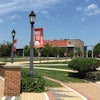Study: Students of Mixed Race Suffer More Health ProblemsCHAPEL HILL, N.C.
Anew study that involved surveying 90,000 adolescent U.S. students showed that those who considered themselves to be of mixed race were more likely than others to suffer from depression, substance abuse, sleep problems, and various aches and pains.
Conducted by researchers at the University of North Carolina at Chapel Hill and the National Institutes of Health, the investigation found that adolescents of mixed race were more likely to have other health problems as well.
“It did not matter what races the students identified with, the risks were higher for all of them if they did not identify with a single race,” says Dr. J. Richard Udry, principal author of a paper on the work appearing in the November issue of the American Journal of Public Health.
“Most of the risk items we assessed may be related to stress, and so we believe being of mixed race is a source of stress,” Udry says. “From this work, we cannot identify further the sources of that stress. More research is needed to identify those sources and possibly suggest programs that might help biracial adolescents.”
The new findings derive from data compiled as part of the UNC-based National Longitudinal Study of Adolescent Health, the largest and most comprehensive survey of teen-agers ever conducted in the United States.
In the detailed surveys they completed, students could give more than one answer when asked about their race. Those who called themselves biracial tended to be more likely to smoke and drink, Udry said. Overall, older biracial children were more likely to have sex at younger ages, to have access to guns and to have poorer experiences at school such as through suspensions, skipping class and repeating grades.
In characteristics not related to traditional risks, such as grades, vocabulary, family structure and family education, mixed-race adolescents often fell between single-race adolescents, he said. For example, Asians had higher grade-point averages than Whites and were more likely to have a college-educated parent, but children with both Asian and White parents had averages between those two peer groups and were more likely to have a parent who attended college than White-only adolescents.
“Quite a few studies attest in some way to the emotional, health and behavioral risk problems of multiracial adolescents,” Udry says. “The most common explanation for the high-risk status is the struggle with identity formation, leading to lack of self-esteem, social isolation and problems of family dynamics in biracial households.”
Udry is professor of maternal and child health at the UNC School of Public Health, professor of sociology in UNC’s College of Arts and Sciences and a fellow at the Carolina Population Center. His co-authors are Dr. Rose Marie Li, formerly of NIH, and Janet Hendrickson-Smith, research associate at the UNC center.
© Copyright 2005 by DiverseEducation.com















